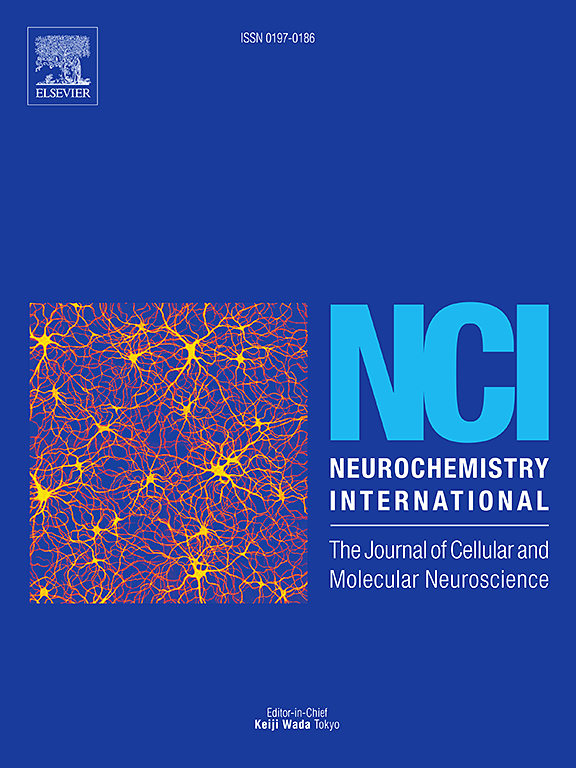可卡因和酒精的联合施用改变了大鼠脑肽/蛋白质谱的表达:MALDI成像质谱法
IF 4
3区 医学
Q2 BIOCHEMISTRY & MOLECULAR BIOLOGY
引用次数: 0
摘要
虽然同时使用酒精和可卡因在多种物质使用模式中很常见,但人们对这些物质对大脑的综合影响知之甚少。蛋白质组学方法能够识别潜在的生物标志物和新的药物靶点,用于成瘾和相关精神疾病的诊断和治疗。本研究的主要目的是探索可卡因和酒精的结合如何影响中脑边缘多巴胺能通路中的脑肽/蛋白质特征。为此,我们在Wistar大鼠动物模型中长期同时静脉注射这些物质。采用基质辅助激光解吸/电离成像质谱法(MALDI-IMS)对个体动物大脑5个区域(海马腹侧、海马背侧、杏仁核、伏隔核和前额叶皮质)的肽/蛋白谱进行了表征。我们的研究结果表明,与单独暴露于可卡因或酒精相比,可卡因和酒精的组合对所有区域,特别是杏仁核中检测到的差异表达肽/蛋白(DEPs)的数量具有协同效应。方差分析显示13个dep,对应12个肽/蛋白,在所有组之间差异显著。基因本体(GO)分析表明,大多数联合治疗的dep都富含神经肽受体结合、神经肽信号传导和昼夜睡眠/觉醒过程通路的调节。我们的研究结果表明,可卡因和酒精的组合显著加剧了每种物质分别对具有多种生理功能的肽和蛋白质表达的影响,包括阿片和gaba能神经传递系统。因此,该研究为未来生物标志物和物质恢复疗法的研究提供了基础。这些见解强调了在多种物质使用的情况下,特别是在处理与可卡因和酒精共同使用有关的问题时,研究可卡因和酒精之间的相互作用对神经递质系统的影响的重要性。本文章由计算机程序翻译,如有差异,请以英文原文为准。

Combined administration of cocaine and alcohol alters the expression of brain peptide/protein profiles in rats: a MALDI imaging mass spectrometry approach
While the concurrent use of alcohol and cocaine is common in patterns of polysubstance use, little is known about the combined effects of these substances on the brain. Proteomics approaches enable the identification of potential biomarkers and new pharmacological targets for the diagnosis and treatment of addiction and related psychiatric disorders. The main goal of this study was to explore how the combination of cocaine and alcohol affects brain peptide/protein signatures in the mesolimbic dopaminergic pathway.
To this end, we used a chronic and simultaneous intravenous administration of these substances in a Wistar rat animal model. Peptide/protein profiles in five brain regions (ventral hippocampus, dorsal hippocampus, amygdala, nucleus accumbens and prefrontal cortex) from individual animals were characterised by means of matrix-assisted laser desorption/ionisation imaging mass spectrometry (MALDI-IMS).
Our results showed that, compared to exposure to cocaine or alcohol separately, the combination of cocaine and alcohol has a synergistic effect on the number of differentially expressed peptides/proteins (DEPs) detected in all regions, particularly the amygdala. ANOVA reveals 13 DEPs, corresponding to 12 peptides/proteins, that vary significantly between all groups. Gene ontology (GO) analysis indicated that most of the DEPs found for the combined treatment are enriched in neuropeptide receptor binding, neuropeptide signalling and regulation of circadian sleep/wake process pathways.
Our findings demonstrate that the combination of cocaine and alcohol significantly exacerbates the effects of each substance separately on the expression of peptides and proteins with multiple physiological functions, including the opioid- and GABA-ergic neurotransmission systems. This study therefore provides the basis for future research on biomarkers and substance recovery therapies.
These insights underscore the importance of examining the interactions between cocaine and alcohol in terms of their effects on neurotransmitter systems in the context of polysubstance use, particularly when addressing issues related to cocaine and alcohol co-use.
求助全文
通过发布文献求助,成功后即可免费获取论文全文。
去求助
来源期刊

Neurochemistry international
医学-神经科学
CiteScore
8.40
自引率
2.40%
发文量
128
审稿时长
37 days
期刊介绍:
Neurochemistry International is devoted to the rapid publication of outstanding original articles and timely reviews in neurochemistry. Manuscripts on a broad range of topics will be considered, including molecular and cellular neurochemistry, neuropharmacology and genetic aspects of CNS function, neuroimmunology, metabolism as well as the neurochemistry of neurological and psychiatric disorders of the CNS.
 求助内容:
求助内容: 应助结果提醒方式:
应助结果提醒方式:


